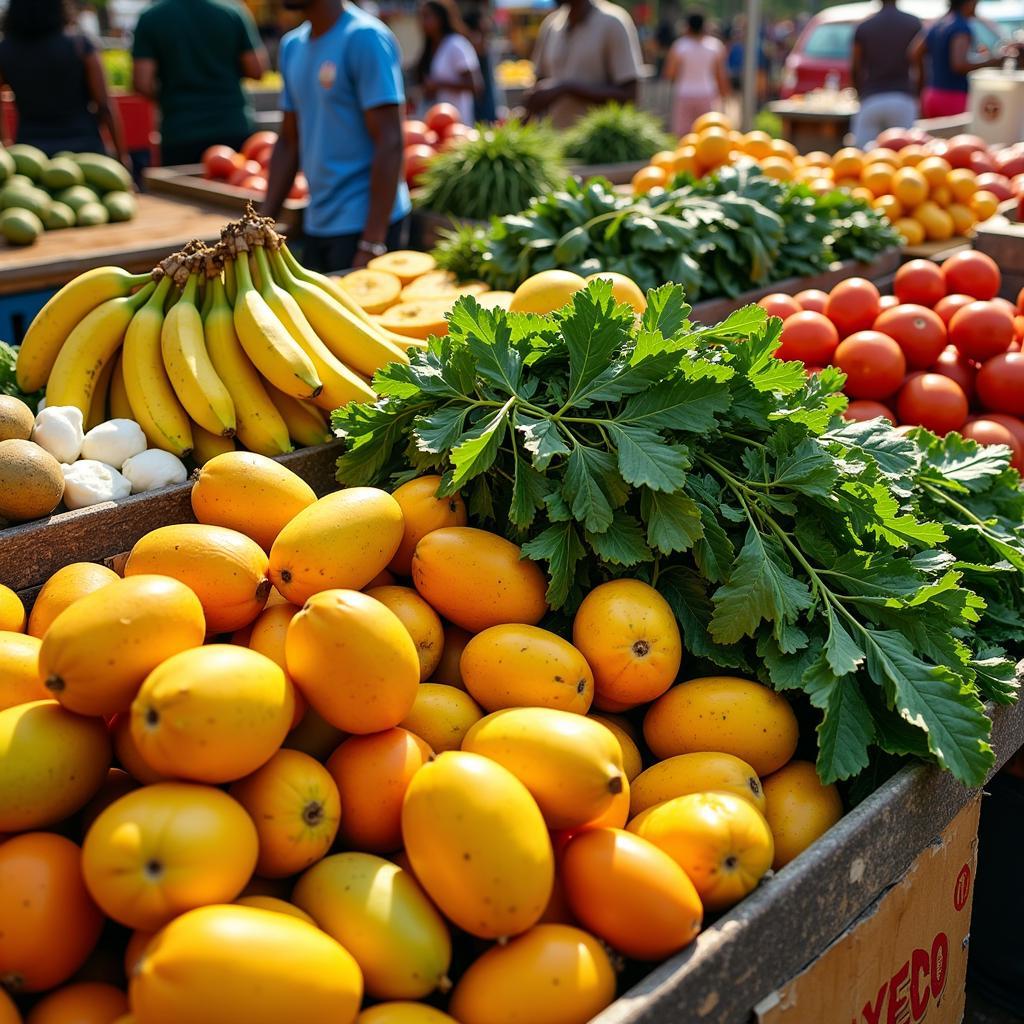Unveiling the Beauty of African Banana Leaf Art
African Banana Leaf Art is a captivating tradition deeply rooted in various cultures across the African continent. This unique art form transforms humble banana leaves into stunning creations, showcasing the ingenuity and artistic flair of African artisans. From intricate wall hangings to ceremonial masks and everyday utensils, the versatility of banana leaves as an artistic medium is truly remarkable. This article explores the rich history, diverse techniques, and cultural significance of African banana leaf art. Let’s delve into the world of this vibrant and eco-friendly art form.
A Journey Through the History of African Banana Leaf Art
The use of banana leaves in art dates back centuries, intertwined with the daily lives of communities where banana plants thrived. Initially, the leaves were primarily used for practical purposes like wrapping food, creating shelter, and weaving mats. However, over time, this practicality evolved into an art form, with artisans recognizing the potential of the leaves to create beautiful and symbolic objects. This artistic expression became integral to various cultural practices, ceremonies, and storytelling traditions. The knowledge and skills of banana leaf art have been passed down through generations, preserving a rich heritage. African banana leaf art often features patterns and symbols unique to specific regions and tribes, adding layers of meaning and narrative to the artworks. You might be surprised to find out how many dishes utilize banana leaves in some form or another! If you’re curious about other uses for African plants, you might be interested in learning about an African Grey diet.
Exploring the Diverse Techniques of Banana Leaf Art
The creation of African banana leaf art involves a variety of techniques, each contributing to the unique aesthetic of the finished piece. These techniques range from simple weaving and plaiting to more complex methods like stitching, dyeing, and appliqué. Before they can be used, banana leaves are often treated through processes like boiling or drying to enhance their durability and flexibility. Some artists incorporate natural dyes derived from plants and minerals to add vibrant colors and intricate patterns to their creations. The tools used in banana leaf art are often simple, including needles, knives, and natural fibers, reflecting the resourcefulness of the artisans. You can even explore various African food stuffs that utilize the banana leaf.
The Cultural Significance of Banana Leaf Art
African banana leaf art holds deep cultural significance, representing more than just aesthetic beauty. These artworks often play a crucial role in traditional ceremonies, rituals, and storytelling. In some cultures, specific patterns and symbols woven into banana leaf creations hold symbolic meanings, representing ancestry, spirituality, or social status. The art form serves as a powerful medium for expressing cultural identity and preserving traditional knowledge. Banana leaf art also plays a vital role in the local economies of many African communities, providing a source of income for artisans and contributing to the cultural tourism sector. What do African grey parrots eat, you ask? Quite a lot, actually, and it’s often wrapped in banana leaves!
How is Banana Leaf Art Used Today?
While traditionally used for ceremonial objects and everyday items, African banana leaf art has also found its place in the contemporary art world. Artists are pushing the boundaries of this traditional medium, incorporating new techniques and exploring innovative designs. From wall hangings and sculptures to fashion accessories and home décor, African banana leaf art is gaining international recognition for its unique beauty and sustainable nature. The increasing demand for eco-friendly and ethically sourced art has further contributed to the growing popularity of banana leaf creations. If you are in the UK and own an African Grey, you can even find specific African grey parrot food uk made with banana leaves!
Conclusion
African banana leaf art stands as a testament to the creativity and cultural richness of the African continent. From its humble beginnings as a practical material to its current status as a celebrated art form, the journey of African banana leaf art is truly inspiring. By supporting and appreciating this unique art form, we contribute to the preservation of cultural heritage and empower the talented artisans who keep this tradition alive. So, next time you encounter a piece of African banana leaf art, take a moment to appreciate the intricate craftsmanship and the rich cultural story it tells. Looking for an African grey chop recipe? You can find ones that utilize banana leaves for easier handling and portioning.
FAQ
- What are the primary materials used in African banana leaf art? Primarily dried or treated banana leaves, along with natural dyes and fibers.
- How long does a banana leaf artwork typically last? With proper care, a banana leaf artwork can last for many years.
- Where can I purchase authentic African banana leaf art? You can find authentic pieces online, in fair trade shops, and from art galleries specializing in African art.
- What are some common motifs found in African banana leaf art? Common motifs include geometric patterns, animal figures, and symbols representing nature and spirituality.
- Is banana leaf art sustainable? Yes, banana leaf art is considered a sustainable practice due to the renewable nature of the banana plant.
- Are there different styles of banana leaf art across Africa? Yes, styles and techniques vary widely depending on the region and cultural group.
- How can I learn more about African banana leaf art? Research online, visit museums, and explore books and documentaries about African art and culture.
You might also be interested in learning more about the eating habits of an African grey parrot.
Need more resources? Check out these articles about African food stuffs.
If you have any questions or require further assistance, please don’t hesitate to contact us. Call us at +255768904061, email us at [email protected], or visit us at Mbarali DC Mawindi, Kangaga, Tanzania. Our customer service team is available 24/7.

